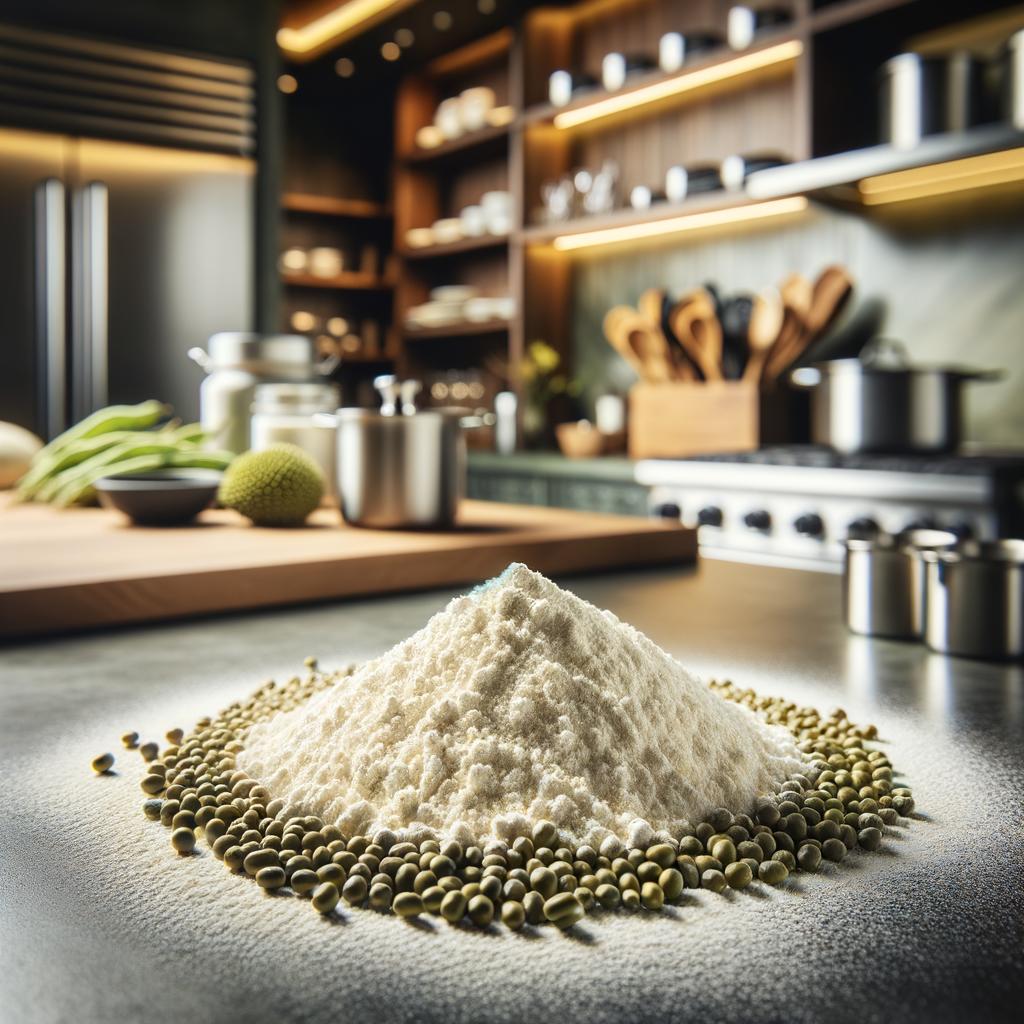Mung Bean Flour

Mung Bean Flour
Description
Mung Bean Flour, sometimes referred to as green gram flour, is a finely milled powder derived from the humble mung bean. Its appearance is a vibrant, pale green hue that mirrors the color of its originator. The texture is incredibly fine and smooth, not dissimilar to a regular all-purpose flour, but with a unique, slightly granular touch. Its flavor is subtly sweet with a distinct nuttiness, a characteristic that sets it apart from other legume-based flours.
Mung Bean Flour is known for its ability to absorb water, forming a gel-like substance. This quality makes it an excellent thickening agent in various dishes. Moreover, it is gluten-free, a characteristic that endears it to those with dietary restrictions and preferences.
Primary Uses
Mung Bean Flour is a versatile ingredient used across a variety of cuisines, particularly in Asian cooking. It's the star in many sweet and savory dishes, from the delectable 'mung bean pancakes' of Korea to the sweet 'green bean soup' of China. It's also used in Indian cuisine to make 'moong dal halwa', a rich and creamy dessert.
Outside of the culinary world, mung bean flour has also been used in traditional Chinese medicine for its cooling properties, and it's believed to help detoxify the body.
History
The mung bean, from which the flour is derived, has a rich history dating back over 4,000 years. It's believed to have originated in India before spreading to China and Southeast Asia. In ancient times, it was considered a symbol of vitality and life, and it was often used in ceremonies and rituals.
Over time, the mung bean's popularity grew, and it became a staple in many Asian diets. The creation of mung bean flour brought a new way to enjoy this ancient legume, allowing for innovative culinary creations that continue to evolve today. There's an old Chinese folklore that tells the story of a village saved from famine by a mysterious old man who taught them how to cultivate and use mung beans.
Nutritional Information
Mung Bean Flour is not just a versatile ingredient; it's also packed with nutritional benefits. It's an excellent source of protein, making it a popular choice for vegetarians and vegans. It's also rich in dietary fiber, which aids in digestion and helps maintain a healthy heart.
Moreover, it contains essential minerals like potassium, magnesium, and folate. Compared to other legume-based flours, mung bean flour has a lower glycemic index, making it a healthier choice for those managing their blood sugar levels.
However, as with all foods, moderation is key. While mung bean flour is healthy, it is also high in calories, so portion control is important.
In the end, the story of mung bean flour is one of versatility, tradition, and nutritional richness. It's an ingredient that has stood the test of time, evolving from a simple bean to a flour that's a staple in many kitchens around the world.

